 The
only canvas Constable painted entirely out of doors shows his father's boatyard
beside the River Stour, near Flatford Mill. The barges built here carried flour
from the mill downstream to Mistley, on the coast.
The
only canvas Constable painted entirely out of doors shows his father's boatyard
beside the River Stour, near Flatford Mill. The barges built here carried flour
from the mill downstream to Mistley, on the coast.British Great Artist - John Constable Painting Gallery
Posted by
Art Of Legend India [dot] Com
On
3:29 AM
Constable's
art matured into greatness after 1815 the year of Waterloo when he exhibited
Boatbuilding at the Royal Academy and abandoned the small canvases of his youth
for the imposing 'six-footers' which made his reputation.
 The
only canvas Constable painted entirely out of doors shows his father's boatyard
beside the River Stour, near Flatford Mill. The barges built here carried flour
from the mill downstream to Mistley, on the coast.
The
only canvas Constable painted entirely out of doors shows his father's boatyard
beside the River Stour, near Flatford Mill. The barges built here carried flour
from the mill downstream to Mistley, on the coast.
Flatford
Mill was the first in a series of large canal scenes painted near the family home,
which included The Hay Wain, Constable's most famous painting. But many of his
admirers preferred The Cornfield one of his last Suffolk scenes which they
presented to the National Gallery after his death in 1837.
The
other landscapes are also charged with personal significance: Salisbury
Cathedral, where his patron Dr John Fisher was Bishop; The Admiral's House,
which he could see from his Hampstead window, and The Chain Pier, Brighton a
view painted while his wife was struggling against TB. His gloom and desolation
after her death can still be detected in the late water-colour, Stonehenge.
 The
only canvas Constable painted entirely out of doors shows his father's boatyard
beside the River Stour, near Flatford Mill. The barges built here carried flour
from the mill downstream to Mistley, on the coast.
The
only canvas Constable painted entirely out of doors shows his father's boatyard
beside the River Stour, near Flatford Mill. The barges built here carried flour
from the mill downstream to Mistley, on the coast.
On a
warm, summer's day a boy unties his tow-horse from the barge before it passes
under Flatford footbridge. It is late afternoon; in the meadow on the right a
haymaker casts a long shadow as he finishes work for the day.
Constable's
most famous painting shows the tranquil scene at Flatford Mill in early summer:
only the dog looks up as an empty hay waggon crosses the Stour by Willie Lott's
cottage on its way to the meadow beyond. The artist's own name for his picture
which took five months to paint was Landscape: Noon. The sun is out of the
picture, high and slightly in front of us; scudding clouds throw patches of
shadow across the green fields.
The
Bishop of Salisbury himself commissioned this painting, which records the view
of the Cathedral seen from his garden. The bishop and his wife are shown by the
gate on the left, looking at a storm cloud billowing over the spire. That cloud
caused Constable a great deal of trouble: it was originally much darker, and
the Bishop disliked it so much that he asked for the sky to be 'improved'
Constable's
views of Hampstead then a small village outside London are often painted in the
brisk, vigorous style of his oil studies. This one shows the house of Admiral
Barton, with its strange roof laid out like a warship's quarter-deck, which the
artist could see from his upstairs window.
A view
near East Berg/wit shows the narrow lane which Constable took as a schoolboy on
his way to Dedham. The metal plough is accurately observed, and the July
flowers were copied from specimens, but unusually Constable invented the church
tower seen in the distance.
Darkening
clouds and a grey, storm-driven sea cast an air of gloom over fashionable
Brighton, where Constable took his wife to Convalesce during the summers of
1824 and 1825. One of his very few seascapes, this picture was completed the
year before Maria died.
This striking water-colour evolved from a pencil
sketch Constable made on his only visit to Stonehenge 16 earlier. The startled hare
in the left foreground was an afterthought,painted on a slip of paper and pasted on to the
original.
Writer - Marshall Cavendish
Subscribe to:
Post Comments (Atom)

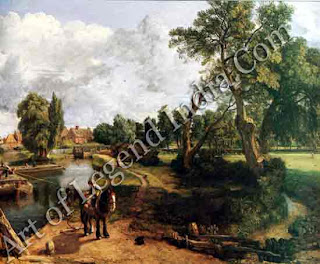
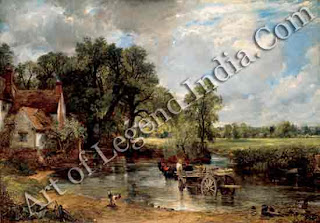
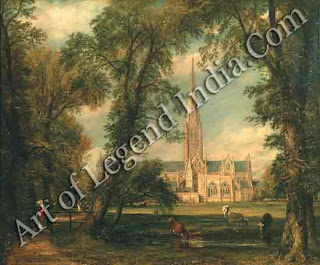
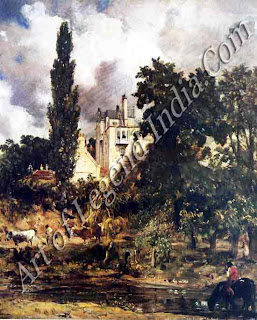
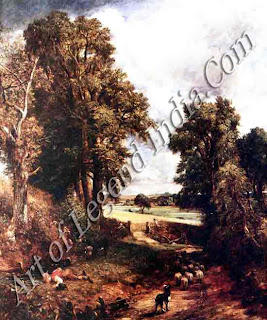
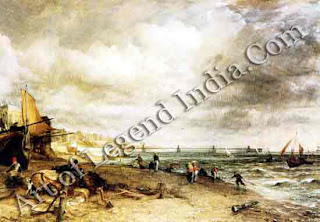
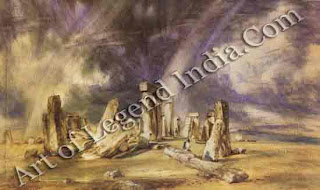










0 Response to "British Great Artist - John Constable Painting Gallery"
Post a Comment